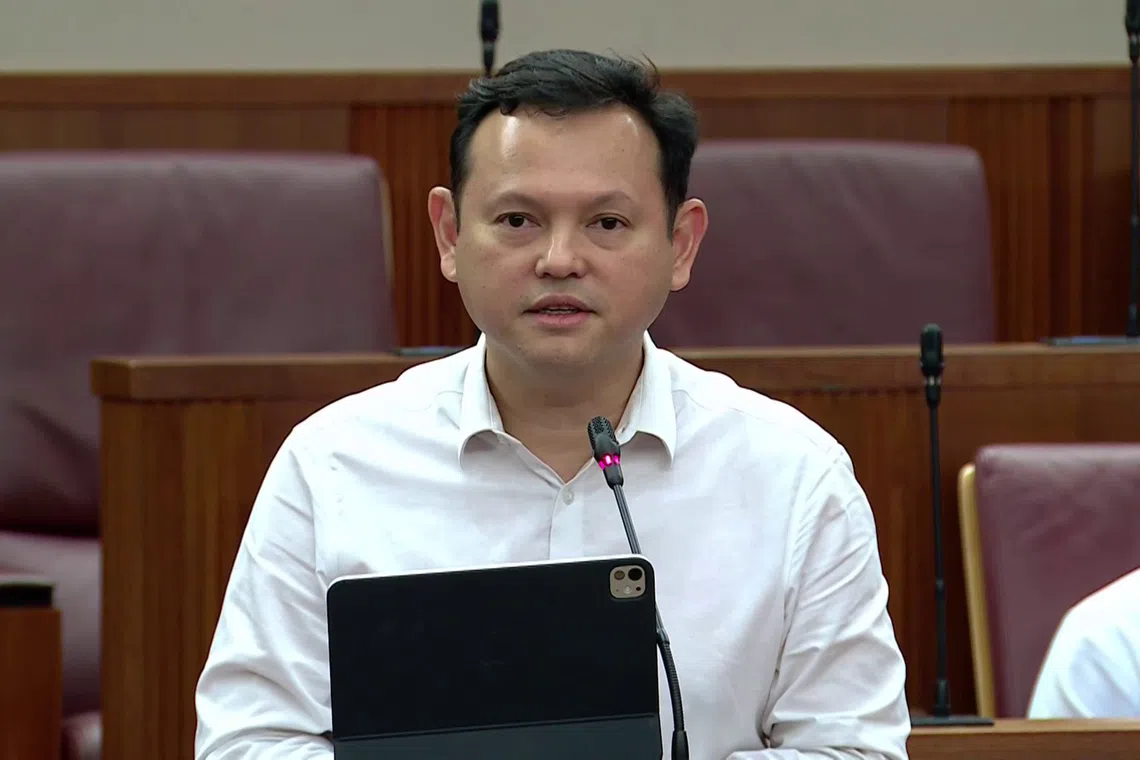Long-term planning and political will needed to tackle climate change in Singapore: Zaqy
Sign up now: Get ST's newsletters delivered to your inbox

Senior Minister of State for Sustainability and the Environment Zaqy Mohammad stressed that Singapore’s adaptation strategy is coordinated, ambitious and backed by long-term thinking across generations of leaders.
PHOTO: MDDI
Follow topic:
SINGAPORE – In dealing with climate change, Singapore’s approach is rooted in long-term planning and political will, said Senior Minister of State for Sustainability and the Environment Zaqy Mohamad.
“Singapore’s future and our survival are at the front and centre of everything we do. Our adaptation strategy is not piecemeal,” he said, calling climate change “the defining challenge of our generation”.
“We are looking 30, 50, even 100 years ahead,” Mr Zaqy added, speaking during the debate on the President’s Address in Parliament on Sept 22.
This approach applies to everything from dealing with increasingly inclement weather to making sure that the nation will have enough food and water.
A case in point is the Republic’s commitment of about $100 billion over the next century for coastal protection.
“We’re just four, five months out into the new term, but it is a serious financial commitment, one that we planned prudently and that we will fund sustainably through our fiscal policies and reserves,” Mr Zaqy said.
Singapore’s adaptation strategy is coordinated, ambitious and backed by long-term thinking across generations of leaders, he stressed.
One success story he pointed to is the Marina Barrage, a dam built across the 350m-wide Marina Channel to keep out seawater, creating the 15th reservoir in downtown Singapore.
When the barrage was first proposed, there were doubts on its feasibility and value.
“Today, it is one of Singapore’s most iconic landmarks – a reservoir, a flood barrier, and a place where families gather for recreation... While it was built for flood control and water supply, it is now a place where families picnic, students learn and communities gather,” he said.
“That is the approach we must take. Protecting our people and assets with a purpose, and creating greater value in adaptation.”
Acknowledging that the pace of climate action is slowing and the spirit of global cooperation is weakening, he said that Singapore will still feel the full force of climate change despite contributing only 0.1 per cent of global emissions.
“While we cannot change the world’s trajectory alone, we must be prepared to live with its consequences,” said Mr Zaqy.
Climate impacts include rising sea levels and warmer temperatures.
To protect Singapore’s coastlines, the Government has embarked on long-term projects such as the Long Island project off East Coast
To build heat resilience as temperatures rise, the Government is developing a whole-of-government heat resilience strategy that covers urban planning, building design, public health and community awareness, he said.
A national heatwave response plan also sets out a national approach to how various sectors should respond during a heatwave, from eldercare centres suspending outdoor activities in the afternoon to schools possibly shifting to home-based learning if the need arises.
On the food security front, Mr Zaqy stressed the need for Singapore to diversify its food sources and for Singaporeans to support local produce as disruptions are becoming more common with floods, droughts and heatwaves affecting crops globally.
With rising demand and changing weather patterns, Singapore has to work harder to conserve water, which is a precious and limited resource here, he added.
Meanwhile, as Singapore develops new industries and produces and consumes more, Mr Zaqy also urged Singaporeans to reduce, reuse and recycle to help better manage waste here.
He also touched on the need to invest in a low-carbon future. Despite the backsliding of global climate action, he stressed that Singapore must stay the course in the transition to a low carbon future.
The Government will continue to support businesses with incentives to improve energy efficiency and is using the carbon tax collected to support businesses in the green transition and adopt low-carbon technologies, he said.
Besides partnering industries for climate mitigation measures such as cross-border carbon capture and storage, Singapore is building its capabilities in nuclear science and safety to allow the nation to assess risks and plan for long-term possibilities, he noted.
The Republic has yet to make a decision to tap nuclear energy, a low-carbon energy source.
Households can also help to lower their carbon footprint by switching to efficient appliances, Mr Zaqy added.
As at August, 78 per cent of eligible HDB and 55 per cent of private households have claimed their climate vouchers
In the next five years, Singapore will develop its first national adaptation plan, which was announced during the debate on the Ministry of Sustainability and the Environment’s budget in March.
The plan will be Singapore’s living road map to address the physical risks and social impact of climate change, he said.
Whether it is coastal protection funding or national heat strategies, Mr Zaqy noted, such measures are more than just engineering solutions, and also reflect a philosophy of governance that is rooted in the Government’s long-term view passed down across generations of political leaders.
“This is rooted in fiscal prudence, political will and the conviction that every generation must leave behind a stronger foundation for the next,” he added.


